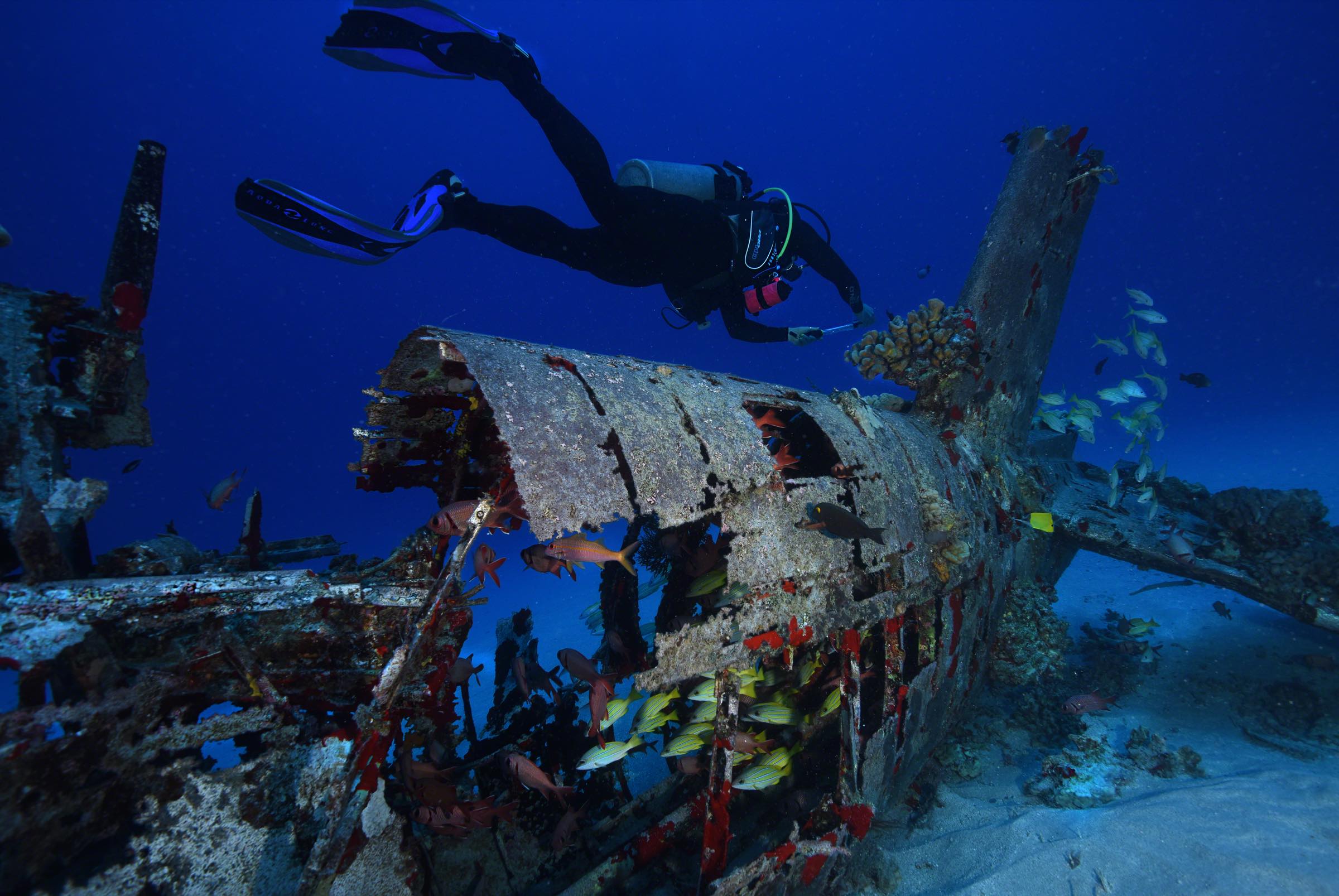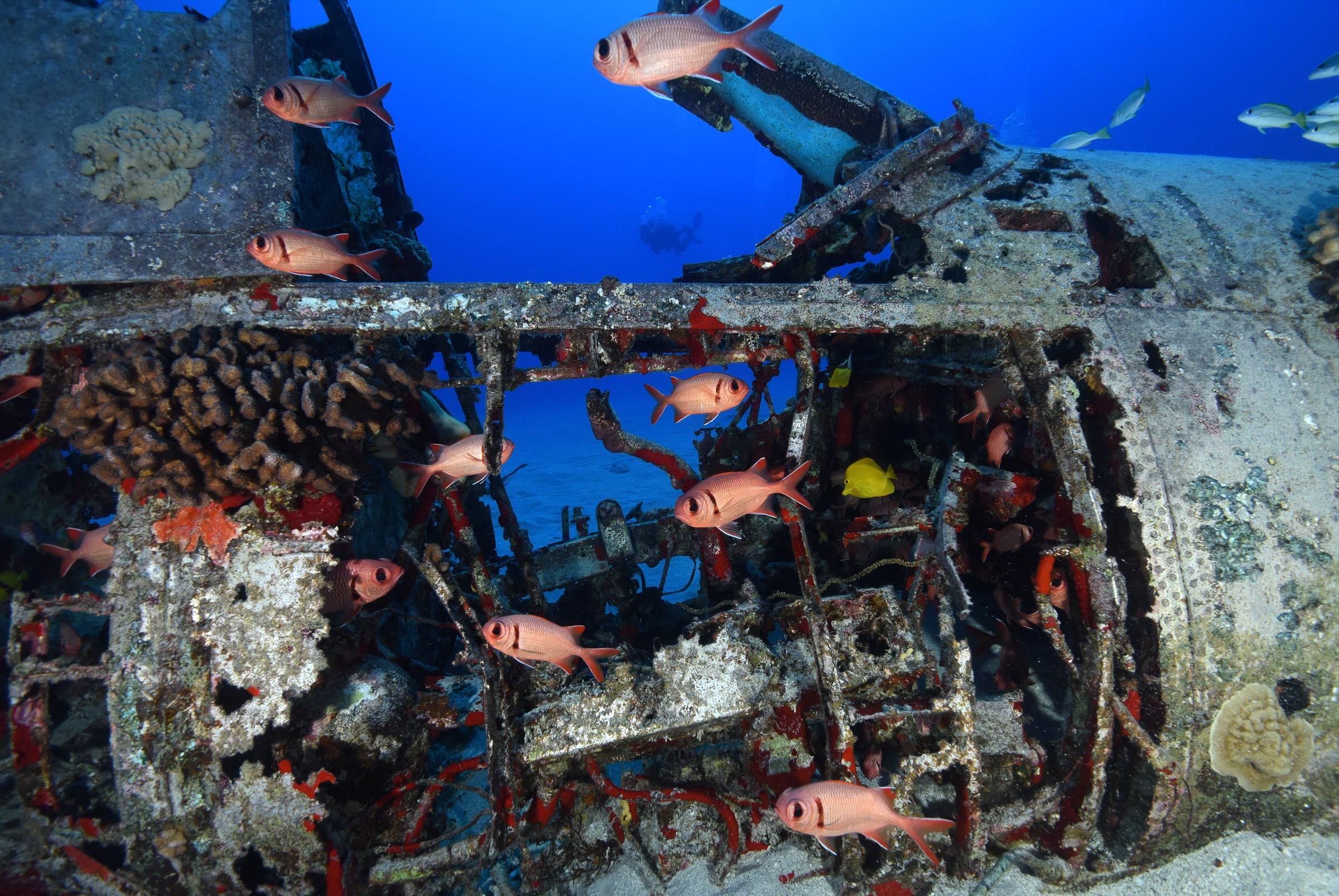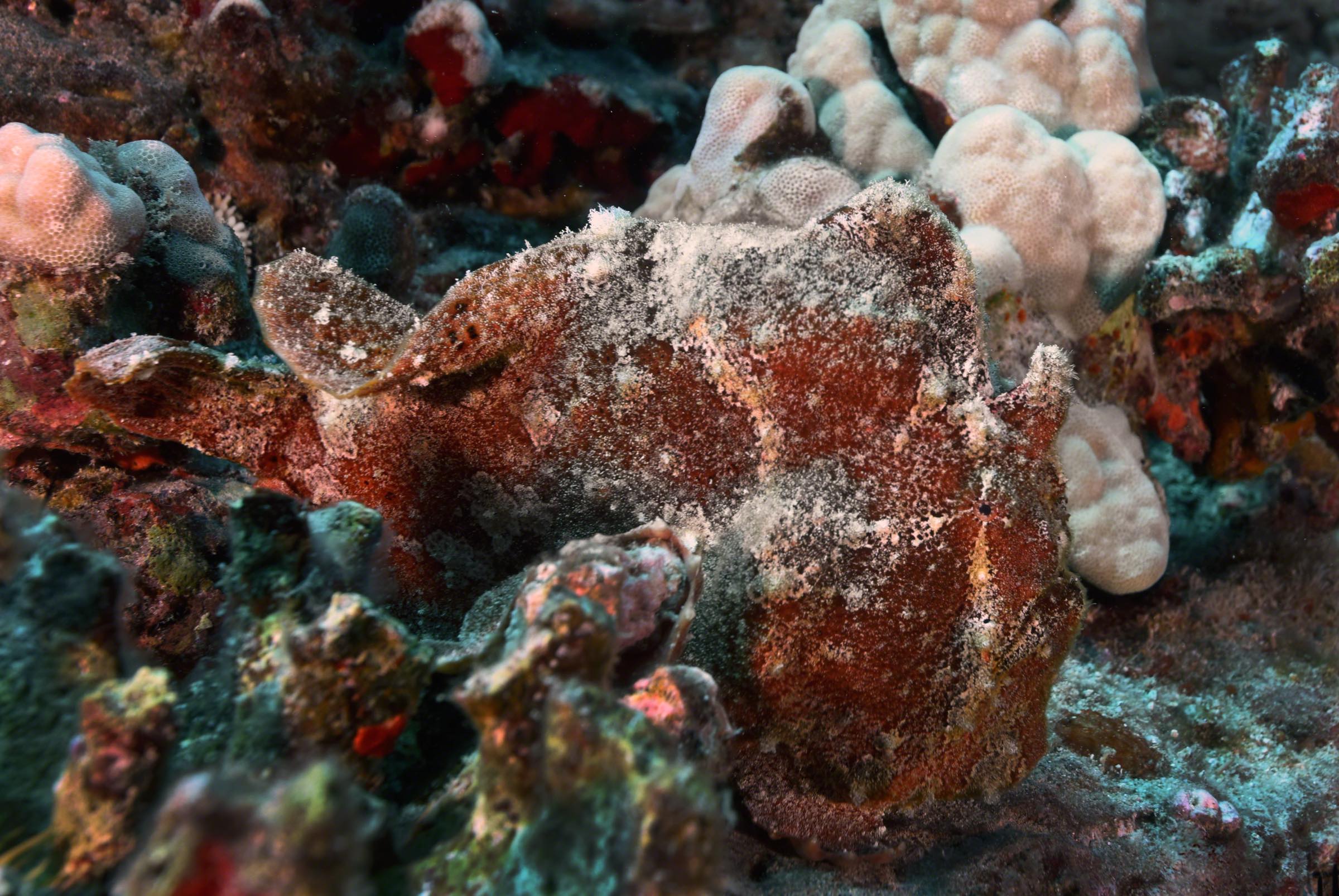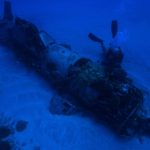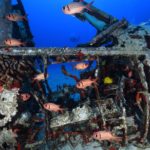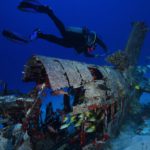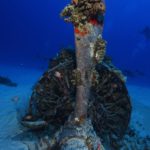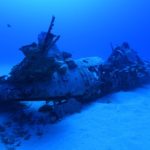It took only ten minutes to cover the 3-mile distance from the Hawaii Kai marina on Oahu’s south-east side to the dive site and now a little over 110 feet of sea water separated us from history. We quickly geared up in the warm Hawaiian sunshine and within minutes we were giant-striding off the stern of the dive vessel and beginning our descent in clear, blue water to the white sandy bottom. The conditions were nearly perfect: almost 100-foot visibility, 80-degree water temperatures, only a mild current and virtually no surface swell.
And there, lying low to the sand, was the object of our quest: the decaying hulk of a sunken Corsair fighter plane. As we approached the wreck, a flood of thoughts washed over our brains. We reflected on the history of this class of military aircraft, we imagined the final moments of this Corsair’s final mission, and we contemplated the stark contrast between the ferocity of war and the serenity of this plane’s final resting place…
Words and photos by Michael Salvarezza & Christopher P. Weaver
The Corsair was the first fighter plane built with Pratt & Whitney’s R-2800 Double Wasp engine, an engine with a double bank of 9 cylinders designed to increase the power of the company’s already famous Wasp engine. The Vought division of United Aircraft submitted the original design in 1938.
An especially large propeller was included in the plans in an effort to make the most efficient use of the powerful engine, necessitating the extension of the fuselage by several feet and also leading to the development of the unique bent-wing structure. Only the Stuka dive bomber used by Germany’s Luftwaffe had a similarly shaped bent wing.
The first test flights of the Vought 4FU Corsair took place in mid-1940 and the first combat missions were in 1942 in Guadalcanal. It was February 14 and eight American fighters, two bombers and two Corsairs were lost in the battle. It was not a good start for the Corsair aircraft!
Throughout the rest of the World War II, Corsairs saw action in various parts of the Pacific Theater. The exploits of one particular squadron, VMF-124, known as the Swashbucklers, became famous as its ace pilot, Al Jensen, was awarded the Navy Cross after he successfully attacked a Japanese airfield at Kahili. In later years, the actions of this squadron were memorialized in the now famous TV program Black Sheep Squadron. Other famous pilots included Charles Lindberg, who fought combat missions with Corsairs over Wotje Atoll.
Corsairs played integral parts in the battles at Tarawa, Rabul, the Philippines and Okinawa, where they were used as a successful defense against Kamikaze pilots.
Once the conflict ended, the Corsair was the only World War II operational fighter that continued in production after the war ended and well into the 1950s. The United States retired the plane after the Korean War, but several other countries continued their use with the final combat uses of Corsairs taking place in 1969 during a conflict between El Salvador and Honduras.
… We swam slowly towards the skeletal remains of the sunken Corsair and immediately were struck at the small size of the plane. We had somehow imagined it to be bigger but here, in front of us, was a fuselage the size of a small bus with a broken off wing to the side. Although a small site, the remains of the plane were teeming with life. This was literally an oasis of life in a featureless sandy bottom about 110 feet below the surface. Schools of snapper, grunts and soldierfish have taken up residence here and in the distance a colony of Garden eels, poking their heads out from the sand, seem to be keeping watch.
As we swam towards the front of the plane, we came across the broken blade of the large propeller and, with the metal skin eroded, the engine itself is visible. Hard corals are growing on various sections of the wreck. The plane is now a fully intact marine ecosystem.
Swimming over the wreck towards the tail end, we came across a large orange colored Frogfish, who seems to have taken a liking to the sunken plane and made it a home!
No diver can resist the temptation to sit inside the cockpit of a sunken airplane and as we carefully settled in, our thoughts turned to the plane’s final moments…
Although the Corsair aircraft were often involved in some very dangerous combat situations, this particular one did not meet with a dramatic end. It was on a routine mission in 1948 over the waters of Hawaii when the engine began to sputter and fail. The experienced pilot knew he would not make it back to base, so he performed a perfect water landing, with the wheels up, flaps slightly extended and speed reduced. The plane was not damaged in the landing but it was also not designed to float. As the pilot floated on the surface in his lifejacket awaiting rescue, the plane sank to its current location.
…We concluded our dive on the sunken World War II Corsair by swimming off into the sand to gaze upon the corpse of the plane from a distance. There, bathed in the warm waters of the Pacific Ocean and illuminated by the distant rays of the sun, the plane sits, a remnant from a time of turmoil and conflict. The sunken Corsair, a device of war designed for conflict, is now enveloped by quiet serenity and is home to a plethora of marine life. Peace has come to the Corsair and, as we begin our assent, we wish her well.
Words and photos by Michael Salvarezza & Christopher P. Weaver
- Approaching the sunken plane
- A diver explores the ghostly remains
- The sunken aircraft is home to a collection of reef fish
- A diver films the wreck
- The fuselage is broken apart
- The cockpit beckons divers
- The propeller is now home to corals and other marine growth
- A dour looking Frogfish has made the plane its home
- The sunken Corsair has found peace at the bottom of the Pacific

